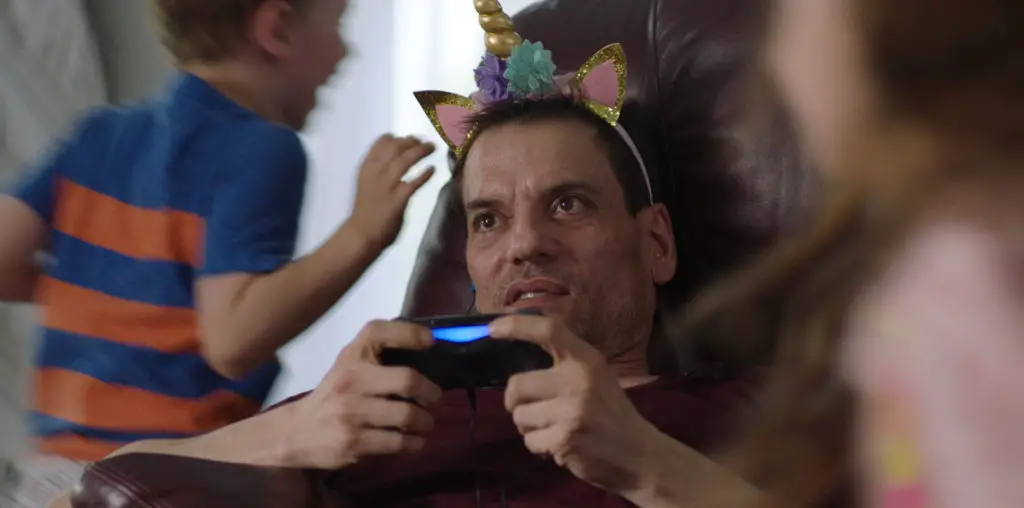
Dario van Vree has an eye for the weird. But in a good way. Following his animation studies at the prestigious KASK academy in Belgium, Dario has undertaken animated projects that, well, certainly catch your eye. Combining cute character design along with what some might describe as salacious, he’s able to marry the two into something wonderfully new and delightful. This is definitely not the work of Walt Disney, which is why we love it.
Aside from directing, Dario teaches animation at the Willem de Kooning Academy and is co-founder of the KLIK Amsterdam Animation Festival. Dario spoke to us about animation, the power of character performance, voice acting, BDSM, and his new short Tabook (which you can watch below). Underneath it all, we discovered that Dario has a decidedly sweet center.

“It baffles me that BDSM can be the subject of the greatest best seller ever and at the same time remain such a taboo…”
How does making an animated short differ from a live-action short?
The process of animation is quite different from live-action in many respects. One of the most profound differences is that with animation everything needs to be created and thought out from scratch.
This gives a great amount of control over all aspects of the film, but leaves little room for coincidence and ‘happy accidents’. In the process of making Tabook, however I did emulate one specific aspect of live-action filming: The sets are all fysical, miniature paper art sets. This allowed me to search for a shot composition and camera angle while shooting the backgrounds, rather than drawing it out by hand.
Another big difference is that in animation most of the editing is done beforehand, in the storyboard phase. A good character animator can, in this particular hand-drawn technique, produce 3-8 seconds of quality character animation in a day, so you have to know exactly what you need and what you don’t need before they start working on a shot.

What inspired the idea behind Tabook?
I was looking for an idea for super short comedy for a wide audience. The film could only be 2 minutes long, so it had to be a clear and recognizable situation. The conflict of wanting to buy something that one feels embarrassed about is something we’ve probably all experienced. The bondage theme was partially inspired by the immense success of Fifty Shades. It baffles me that BDSM can be the subject of the greatest best seller ever and at the same time remain such a taboo. I mean, we don’t have to share everything with everybody, there needs to be a little mystery too, right? But accepting your deviant sexual preferences is a healthy thing and it would help if there would be a little less shame and judgement surrounding that topic.

Have you ever read inappropriate material in public?
The film is autobiographical in the sense that I was in this exact situation at one point in my life. When I was younger and exploring my sexual preferences I found a book, similar to the one in the film. I was ashamed to buy it, even though it was not porn, but an ‘Art Book’. I even tried to hide it under another book about plants at the counter. The cashier gave me a very judgmental look, or maybe he was also just trying to keep his composure. Anyway, I felt terrible. But when I left the bookshop I felt strong and happy, because I had overcome my fear of ridicule and made a step to take ownership a part of myself. It was a liberating experience.

“Sexuality has its dark sides, but this film is not about the dark sides…”
How did you take some of the BDSM imagery and make it so cute?
Sexuality has its dark sides, but this film is not about the dark sides. We wanted to show sexual kinks as an exciting and harmless phenomenon, which they are, if dealt with in a healthy, unrepressed way. The friendly and familiar, almost Disney-esque, drawing style and color palette help to present these sexual preferences as a healthy and natural thing to explore.
Our designer Bonnie Mier has a great talent for drawing cute women and managed to find the right balance between sexy, funny and cute.

How do you direct voice actors? What is your advice?
Directing the voice for Tabook was a challenge. There are no real dialogues in the film so everything needs be communicated through sighs, grunts and mumbles. These can be very particular in my head and to get exactly that intonation from the actor is not always easy. We recorded about 70 minutes of material for just 2,5 minutes. The actress had never done voice acting before, but she gave it all and we managed to get all the right sounds. When cutting the material, often I’d find a little sigh or grunt that was perfect for a certain scene from a part of the recording for a totally different scene. When you let the actor free, that’s when you get the best, most natural sounds. However often you need to describe the feeling or situation in words in order to help them understand the exact emotional charge of a line or sound. Providing them with an example of a similar situation they might have experienced themselves, often works better than trying to describe the exact situation in the film, because it is more relatable for the actor.

Can you offer advice to other filmmakers about how to cope with reactions from the media and rejection from film festivals?
Reactions from the media have been mostly very positive. It’s not hard to cope with that. The only critique we’ve heard that the film can come across as a bit normative. This is something we are aware of and was an intentional decision. Because our target audience it quite broad, it couldn’t be to extreme or outlandish. It needed to be safe enough for people who are not ‘into’ BDSM to understand it as a non-provocative topic. The film didn’t do bad at festivals either, even though because of the super short running time it is not perfect festival material. I think it’s possible that because of the subject matter some festivals didn’t want to screen it. That’s their loss.

A close friend is about to make their first animated movie. What is the one piece of advice you give your friend?
You will have to sink all your energy into this project for a long time. There will be many moments you’ll be doubting everything about it and if you lose all motivation halfway the project it will be hell. So you better know exactly why you want to make this film, what is the pleasurable aspect of it for you as the director. And then make a point of having some fun.
“…in animation most of the editing is done beforehand, in the storyboard phase.”
How do you make a living as an animator? Any helpful advice you can pass along?
Making a living as an animator can be rough at the start. It doesn’t matter that much how talented an artist you are, you will have to learn the business aspect of it. And no matter how dire your situation is, never work just for free. Always let the client know what they are getting and how much it really costs. If it’s a project you absolutely love or get you get enough creative freedom to make it your own, you can do it, but always point out that animation takes a whole lot of effort and dedication to produce. This will earn you respect and doesn’t spoil the market.
Apart from that: Go outside and talk to people.
Watch Dario van Vree’s animated short Tabook.

